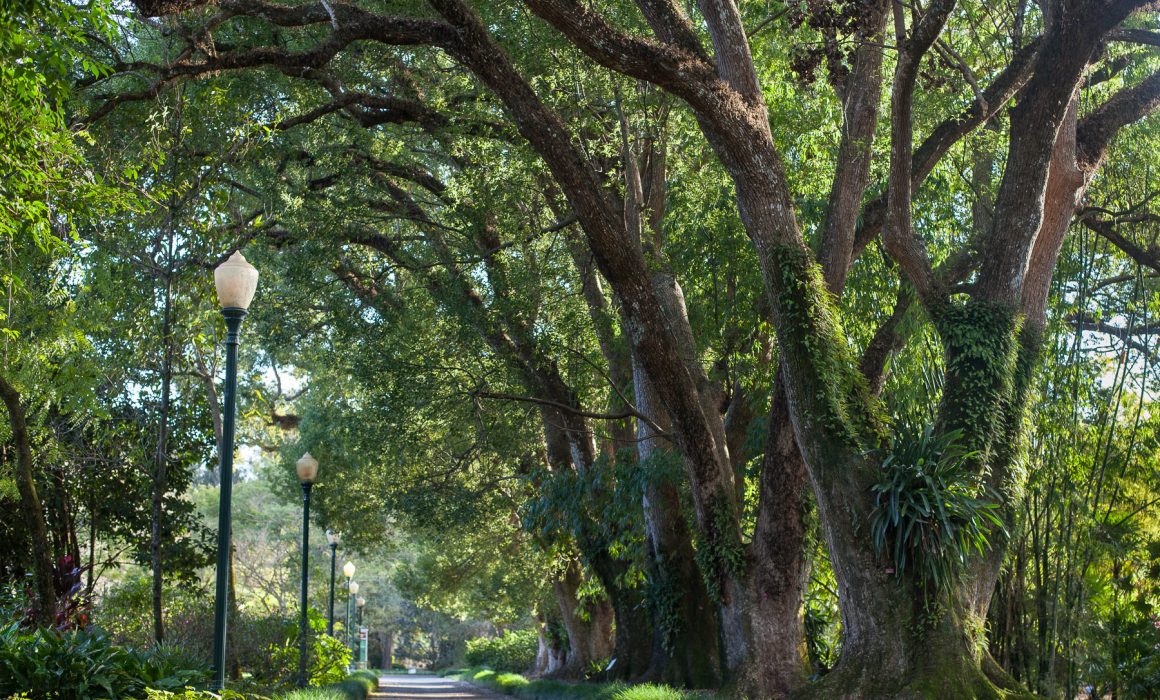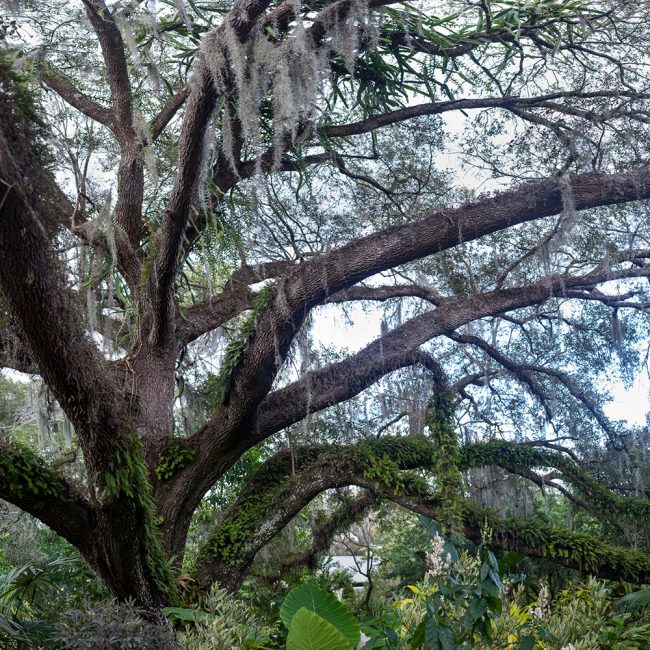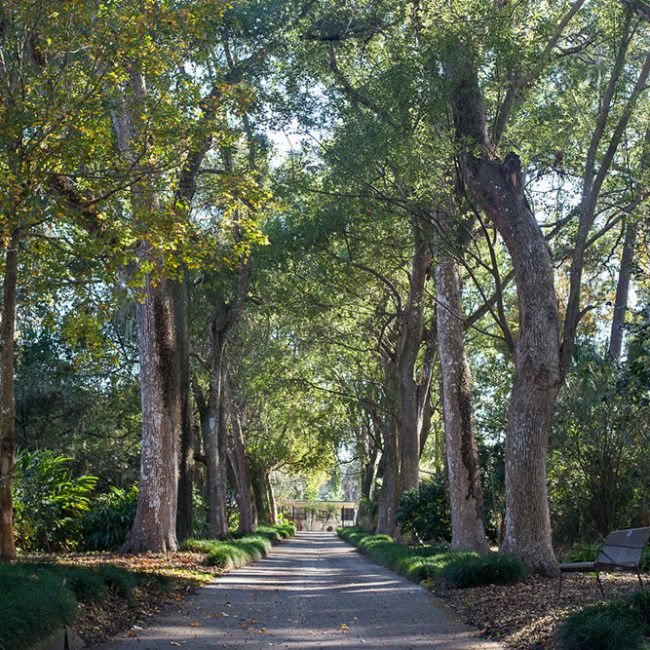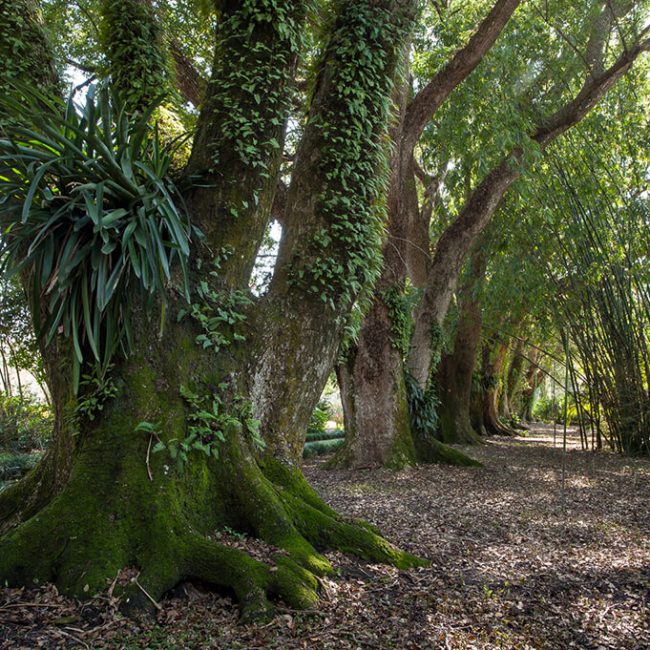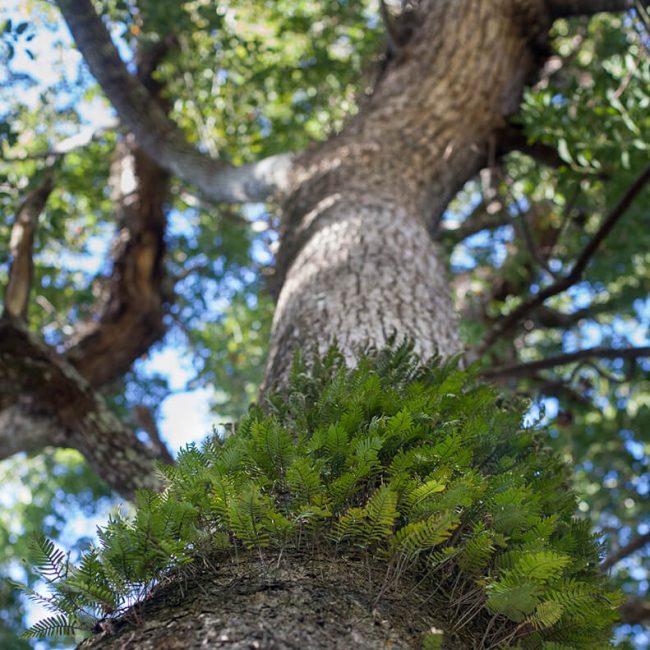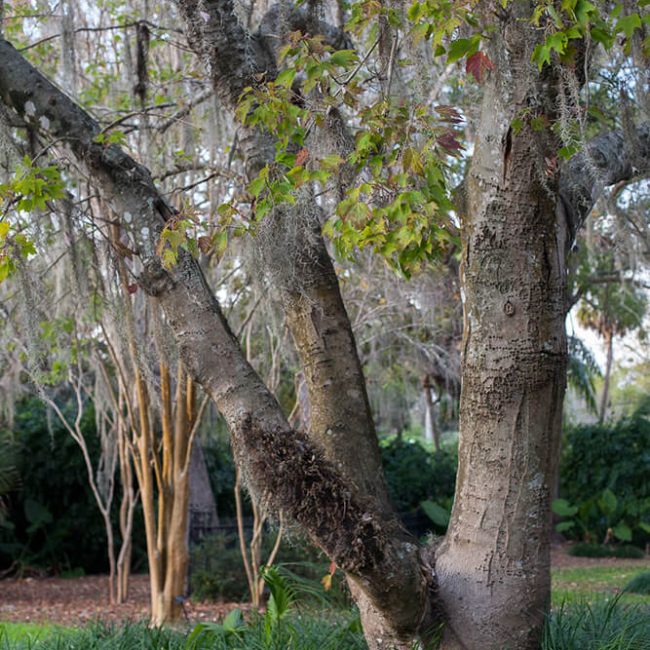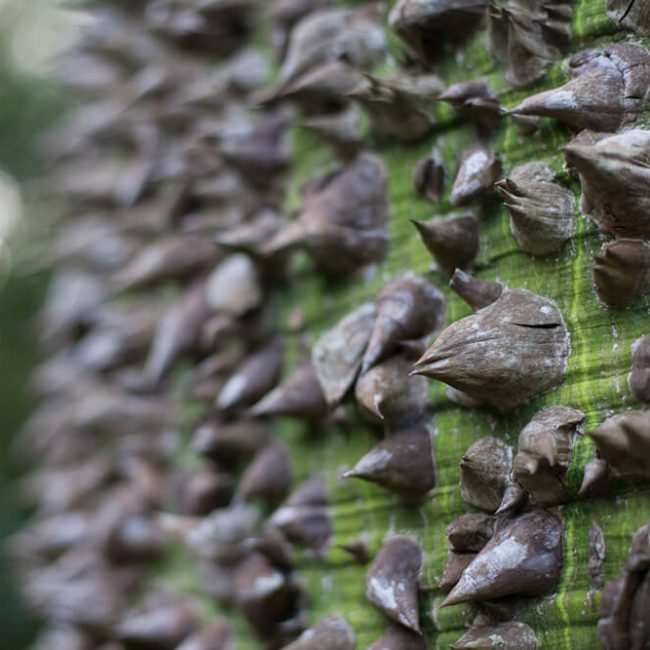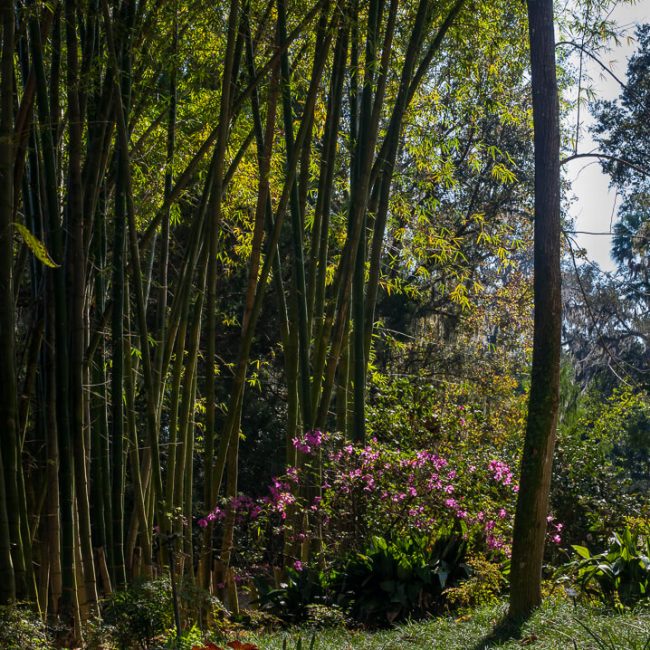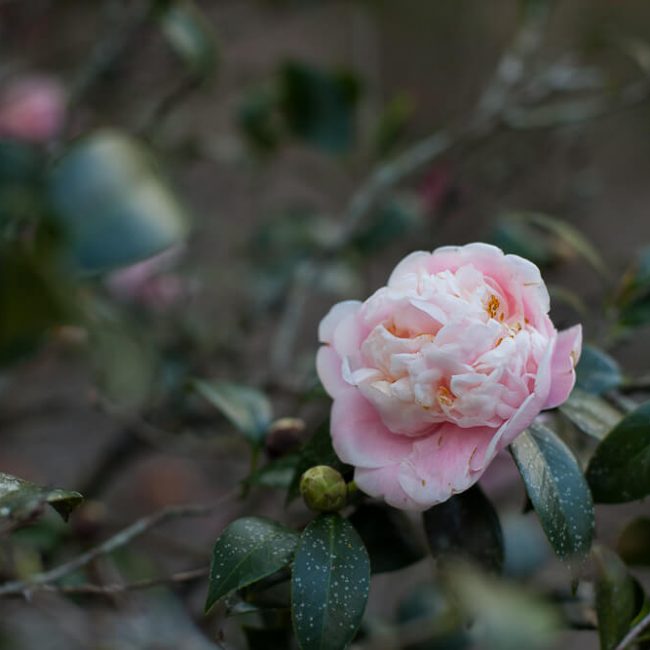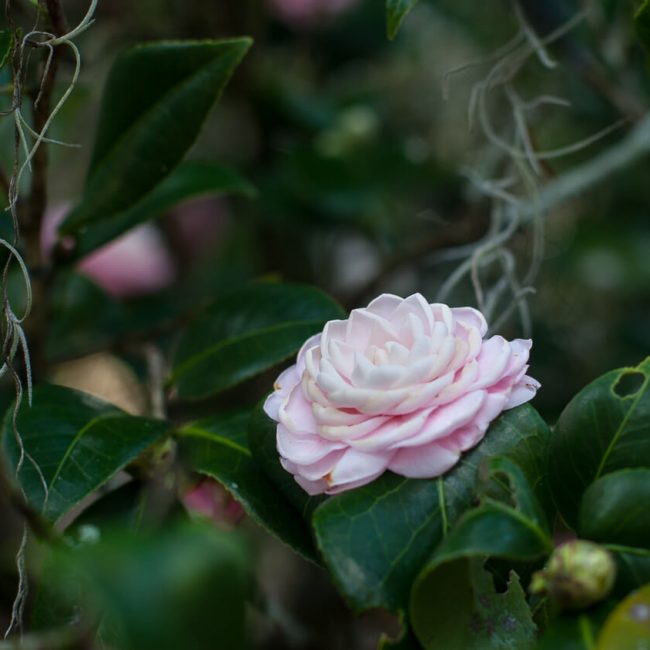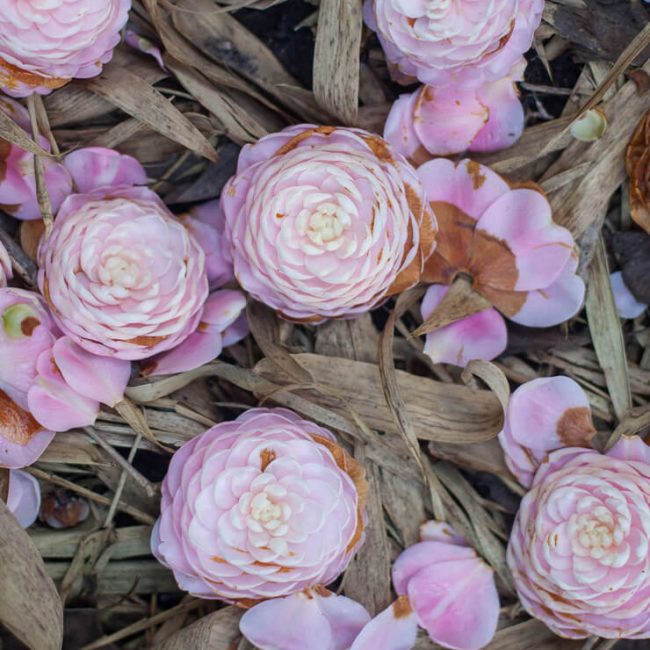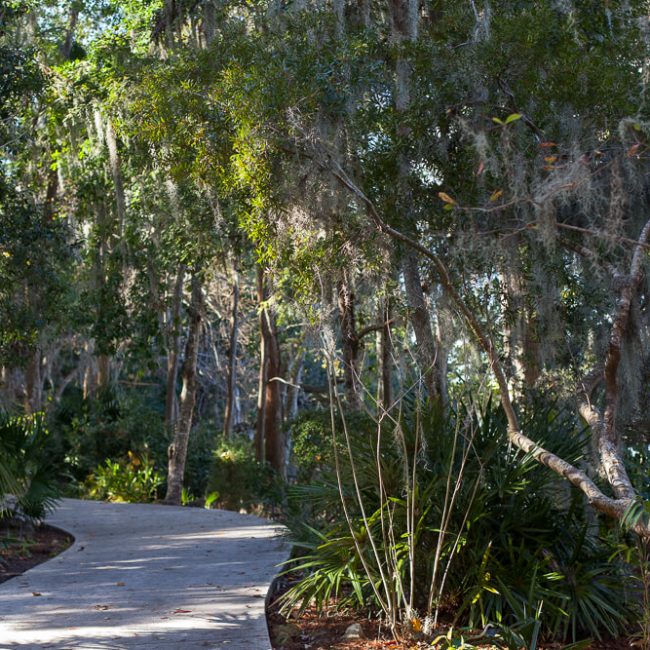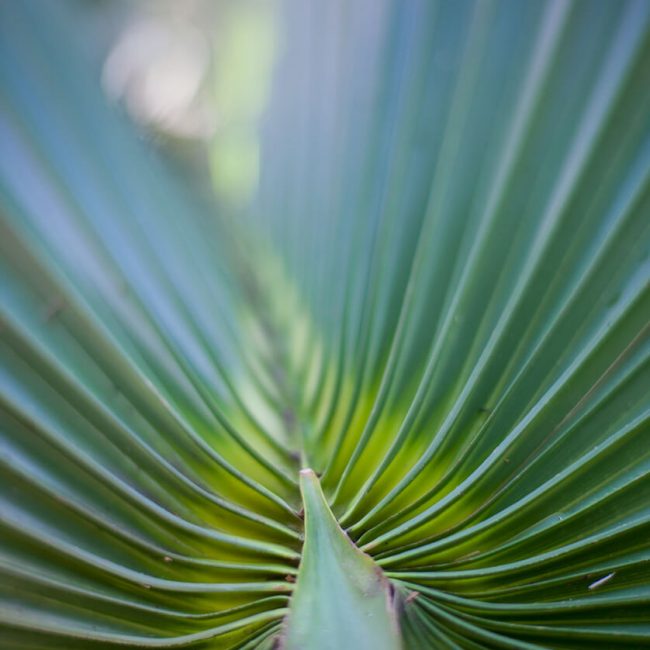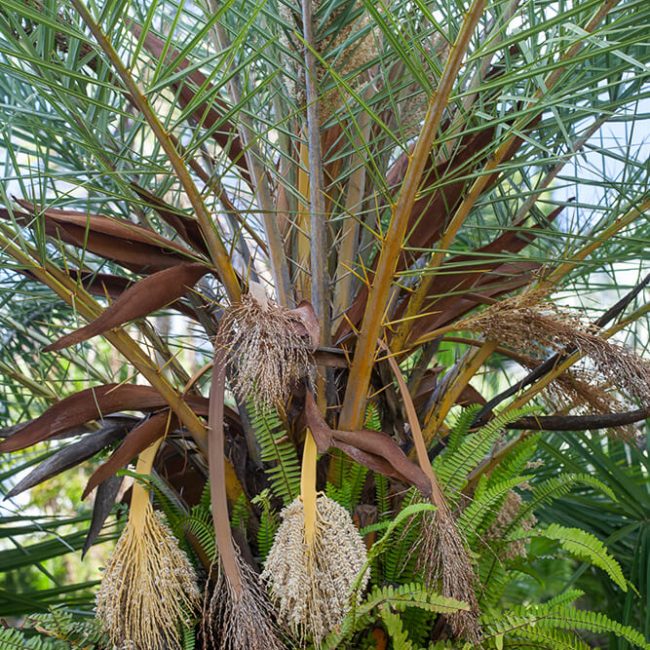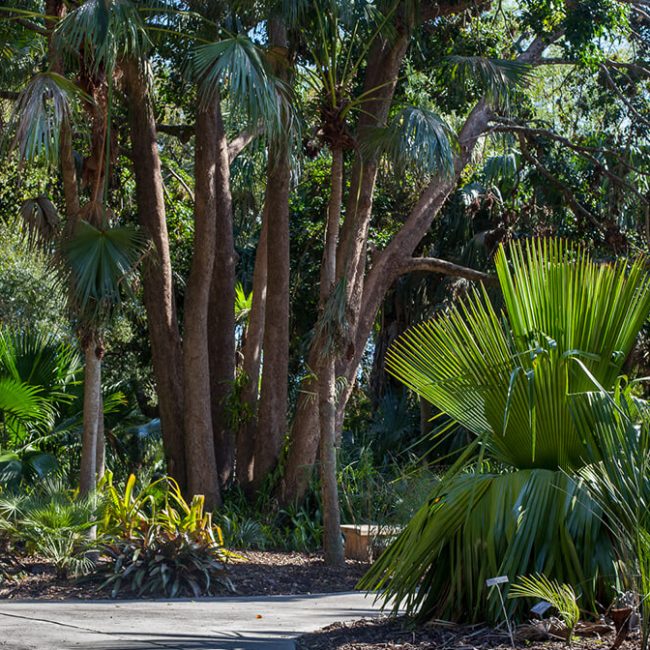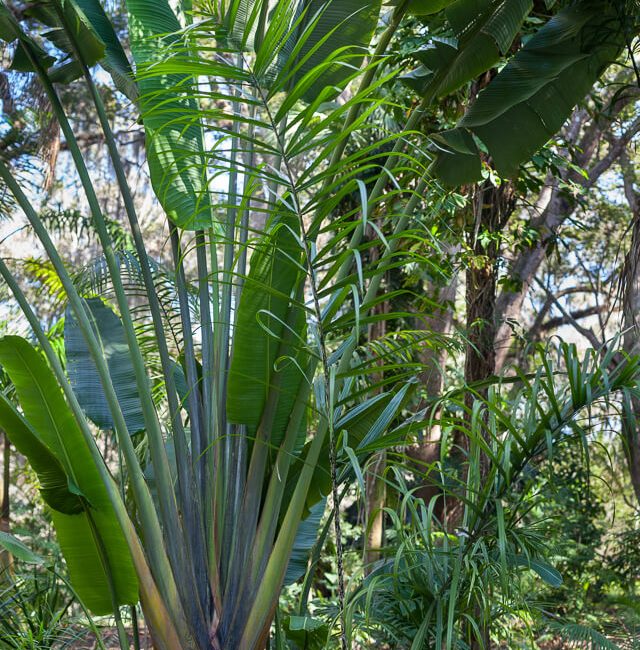Orlando Oasis at Leu Gardens
If you’ve outgrown Disney and roller coasters bring more fear than fun, you may be tempted to write off Orlando as a travel destination. But that’d be a mistake. A mistake that I almost made when my boyfriend asked me to join him on a business trip to Orlando. Instead, I found that Orlando offers much more than theme parks. A little-known garden oasis near downtown Orlando is a welcome retreat from the crowds at Disney and Universal Studios.
The Harry P. Leu Gardens reside on almost 50 acres and contain nearly 30 different plant collections, including camellia, rose, bamboo, azalea, bromeliad, palm, and cycad. If you’re a horticulture or garden enthusiast, Leu Gardens is worth a visit if you find yourself in Orlando.

The lush Tropical Stream Garden
My first steps into the garden were greeted by a majestic southern live oak (Quercus virginiana) that towered above a large green lawn that overlooks Lake Rowena. This is the first of many impressive trees that you’ll find throughout the garden. From there, the path leads you into the lush Tropical Stream Garden. Leu Gardens is located in USDA Zone 9b, where a subtropical climate enables the cultivation of both temperate and tropical species. The Tropical Stream Garden is densely planted with a wide variety of plants, such as palms, gingers, bananas, bamboo, ferns, and aroids. As you walk along the meandering path, you can catch peaks of the stream that splashes through the center of the garden.
Trees of Leu Garden
A visit to Leu Gardens is a welcome reprieve from the hot Florida sun. Mature trees are a predominant feature of the garden and much of my visit was spent meandering beneath their cool canopy. The canopy is composed of many different types of trees, from sweetgums and magnolias to bald cypresses and pines.
Throughout the garden, southern live oaks dominate your view. Their large, spreading branches extend horizontally above the ground and are home to many other plants. Spanish moss (Tillandsia usneoides) dangles from their branches and is a familiar sight in a southern garden. Thriving colonies of resurrection ferns (Pleopeltis polypodioides) carpet the bark. Clumps of bromeliads grow in every available crevice and give the tree trunks a furry appearance.
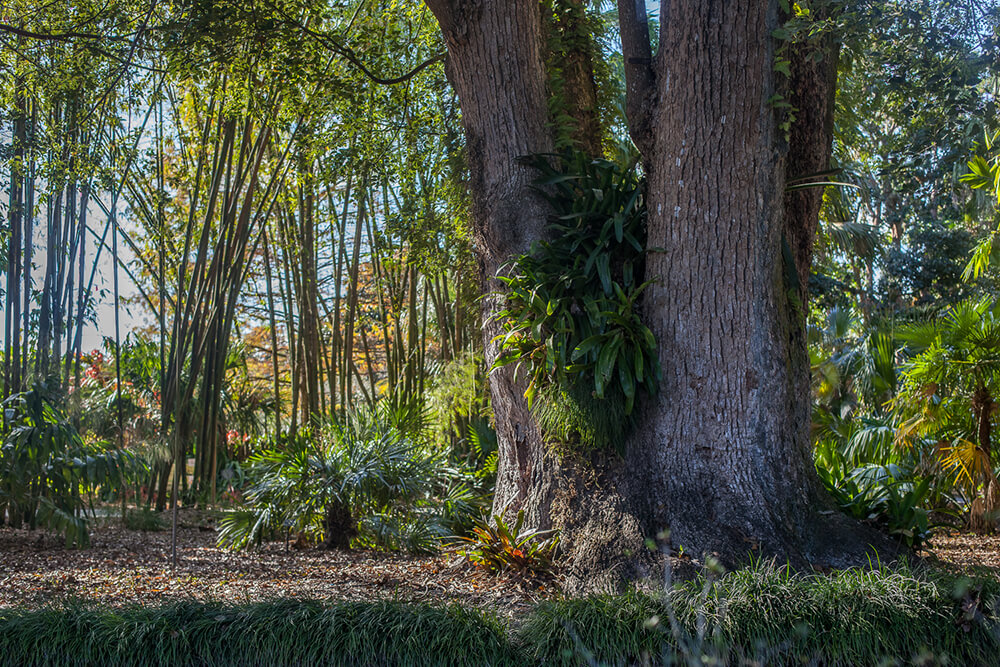
Resurrection ferns and bromeliads on a camphor tree
To reach the Palm and Bamboo Gardens, you’ll walk through an impressive alley of camphor (Cinnamomum camphora) trees. Native to China and Japan, industrious farmers attempted to grow them for their oil, which has medicinal uses. But, the venture didn’t prove viable. Instead, camphor trees found a home in many Florida gardens as a shade tree. Camphor trees feature strong, broad branches that arch high over the earth. Reaching up to seventy feet, they’re an impressive sight.
But not every plant that looks good is also good for the environment. Camphor trees produce thousands of seeds that are easily dispersed through their fruit. They’re listed as a category 1 species on the Florida Exotic Pest Plan Council’s list of invasive species. Regardless, the 70-year-old specimens at Leu Gardens are striking and a signature feature of the gardens.
Walking through the garden, some of the sidewalks were littered with showy orchid-like purple flower blossoms. The Hong Kong orchid tree (Bauhinia x blakeana) is often used as a street tree as it produces both lovely flowers and a delightful scent.
A most unusual specimen is the silk floss tree (Ceiba speciosa). Sharp spikes protrude from its trunk and create a surface that is reminiscent of a medieval weapon. Native from Brazil to Peru, it makes an interesting addition to Florida gardens.
Other species that I saw include toog trees (Bischofia javanica), Chinese cinnamon tree (Cinnamomum aromaticum), lacebark elm (Ulmus parvifolia), leopard tree (Caesalpinia ferrea), and native laurel oak (Quercus laurifolia). The tree collection at Leu Gardens is extensive; these are only few of the many that exist in their collection.
Camellia Collection
The prize jewel of Leu Gardens is the camellia collection. It includes more than 2,000 camellias, which makes it one of the largest in the country. As a northerner, I wasn’t that familiar with camellias. So, it was a special treat to see the collection in full bloom. When little else is blooming in the winter months, camellias put on a gorgeous floral display that lasts for weeks.
Many of the shrubs are 50 to 70 years old and are quite large, standing 20 feet tall with an equal, if not larger spread. An evergreen shrub, their dark glossy leaves create a dramatic backdrop for their exquisite blossoms. Camellia flowers grow in several different styles: single, double, anemone, peony, formal double, and rose double. Single flowers have one row of petals that surround the stamens. In contrast, the formal double style can have more than 100 petals. Colors range from red and white to the most delicate shades of pink.
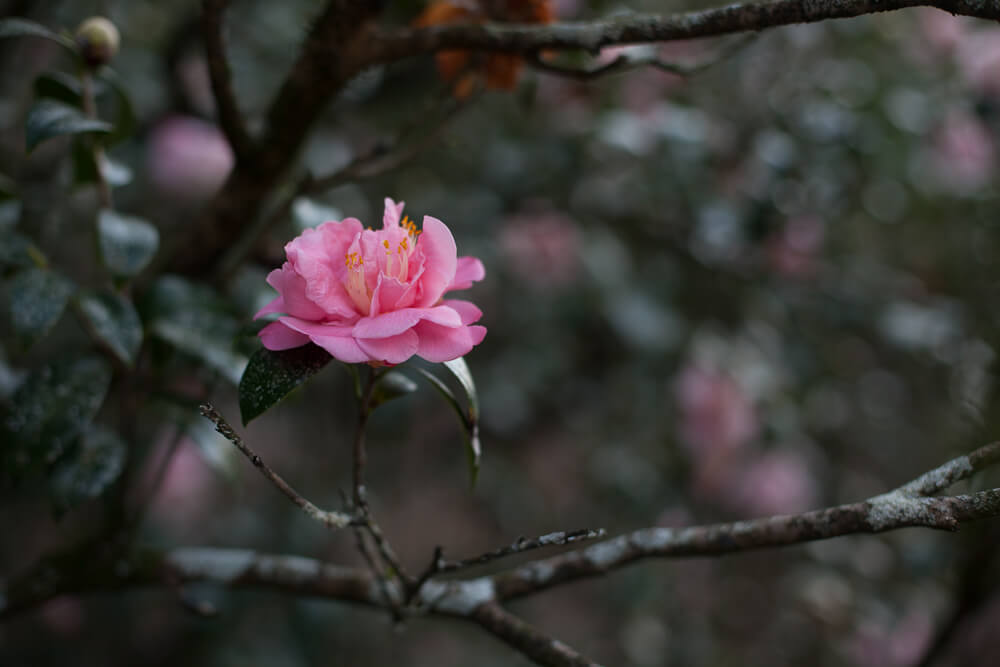
An elegant camellia at dusk (Camellia japonica)
The ground beneath a camellia shrub is typically sprinkled with flowers, which creates a romantic vision in the garden. Instead of individual petals falling off or lingering on the shrub like many plants, the entire flower, including the calyx, falls off whole.
In the South Woods, both camellias and azaleas are interspersed beneath the tree canopy. At one time, the canopy was much thicker and dense with foliage. The deep shade stunted the camellias, which prevented them from prospering for many years. But, nature provided a solution. A hurricane knocked down several weak trees and subsequent pruning thinned the canopy. The extra sunlight enabled the camellias to thrive and ever since they’ve given visitors to Leu Gardens a beautiful show.
The Palm and Cycad Gardens
Palms are ubiquitous with Florida. It’s hard to imagine a Florida landscape without a palm in it. Unlike most of the U.S., Florida is a subtropical environment. While most palms are not cold-hardy, many are suitable for Florida’s climate.
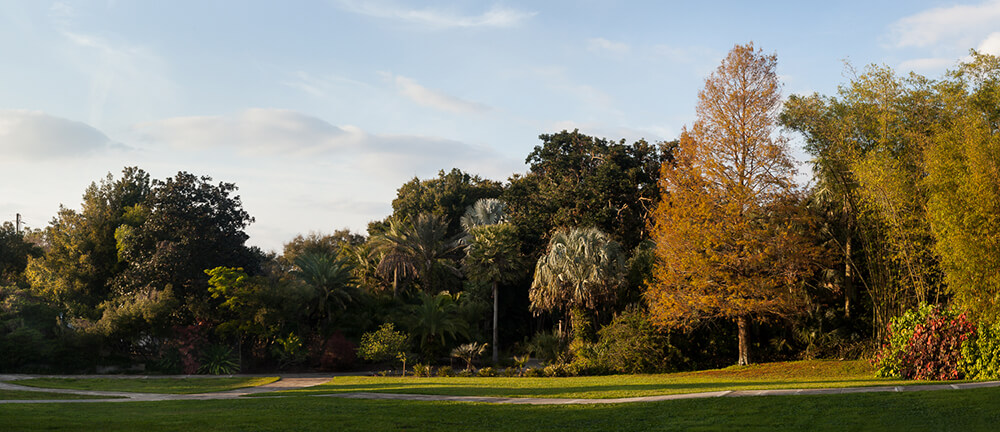
The entrance to the Palm Garden
The Palm Garden includes more than 350 species of cold hardy and semi-tender palms and is one of the largest collections in America. A goal of the garden is to test palm species for their cold-hardiness in Florida’s climate. The collection includes both native and non-native species, including species such as the native cabbage palm (Sabal palmetto), Cuban wax palm (Copernicia hospita), hardy bamboo palm (Chamaedorea microspadix), carnauba wax palm (C. prunifera), and plateau palm (Beccariophoenix alfredii).
Native to Cuba, C. fallaensis is rarely found in cultivation and can grow up to 60 feet tall. It’s stunning when mature and has large silvery colored leaves that create mesmerizing patterns when juxtaposed against a bright sky. Visit Leu Gardens’ website for more information on uncommon palms for central Florida.
Cycads
Walking through the Palm Garden you’ll find another fascinating collection: the cycads. You’re probably familiar with cycads as they are a frequent guest on garden center shelves. But, the plants you find at the store are typically small. Not at Leu Gardens. Many of their cycads are more than 10 feet tall. Walking through the cycad collection is like taking a step back in time.
Cycads first appeared approximately 250 million years ago. They resemble palms but have no relationship to them. They’re actually more closely related to another ancient species: ginkgos. During the Cretaceous Period, cycads had a much larger geographical range than they do today. Fossils have been found in Antarctica, Greenland, England, and Alaska. Dinosaurs walked among cycads and they were a primary food source for herbivores. Remarkably, they survived thousands of years and five different ice ages. Today, they grow in tropical and sub-tropical regions. In the cycad garden, I found Encephalartos gratus, E. lebomboensis, and Bowenia serrulata.
I just scratched the surface of what Leu Gardens has to offer plant and garden lovers. Two to three hours would be enough time for a quick look at the gardens. But I recommend allocating more time for your visit. With more than three miles of pathways that meander through 50 acres of gardens, you could spend a whole day there. A modest $10 admission fee makes a visit to Leu Gardens an affordable way to spend a day in Orlando.

